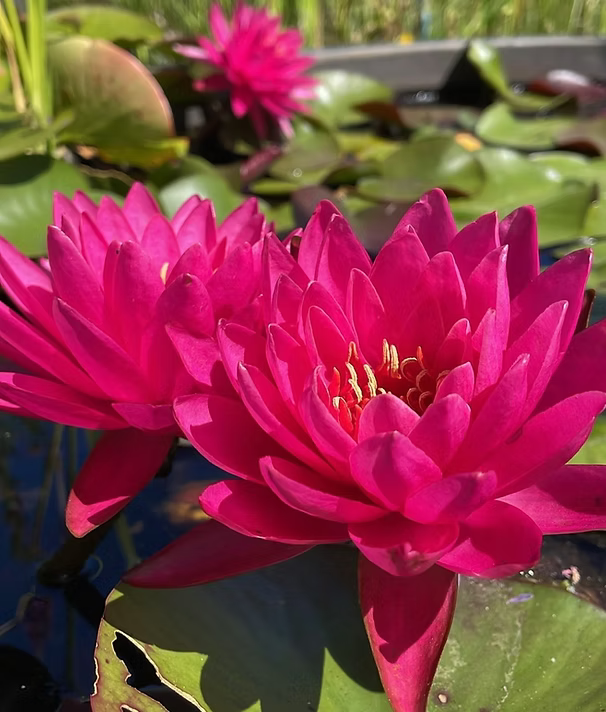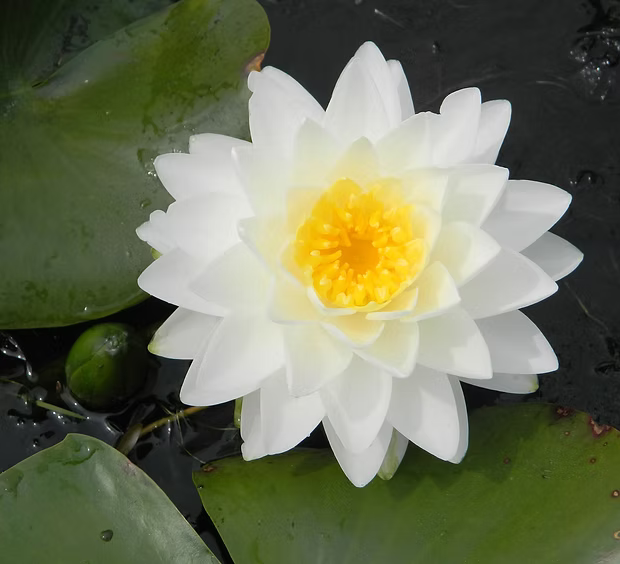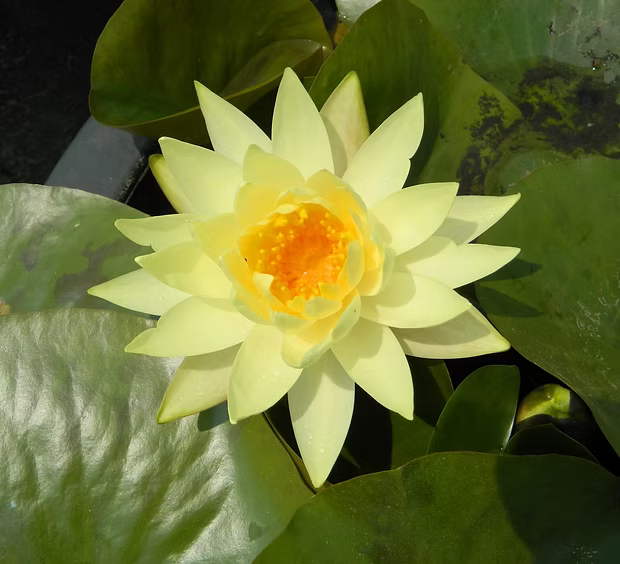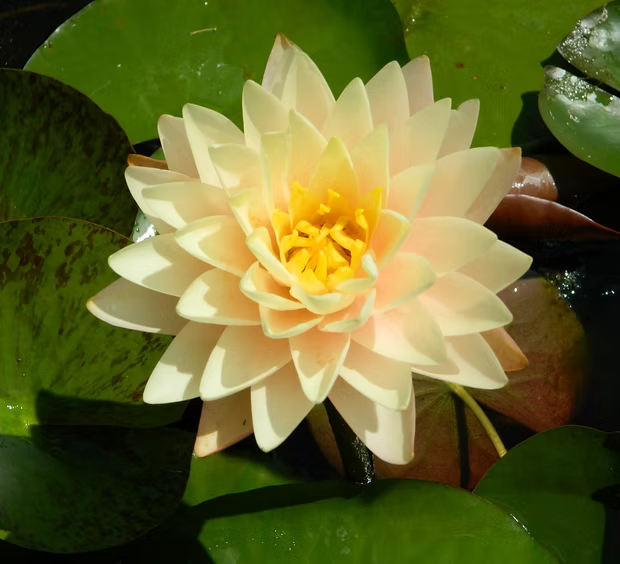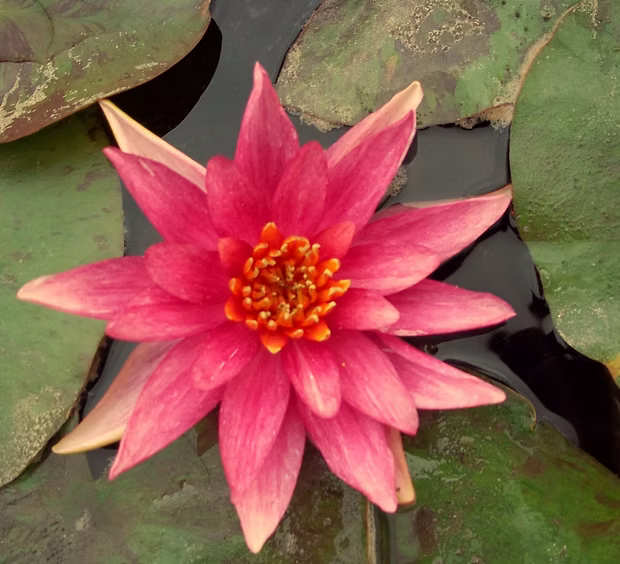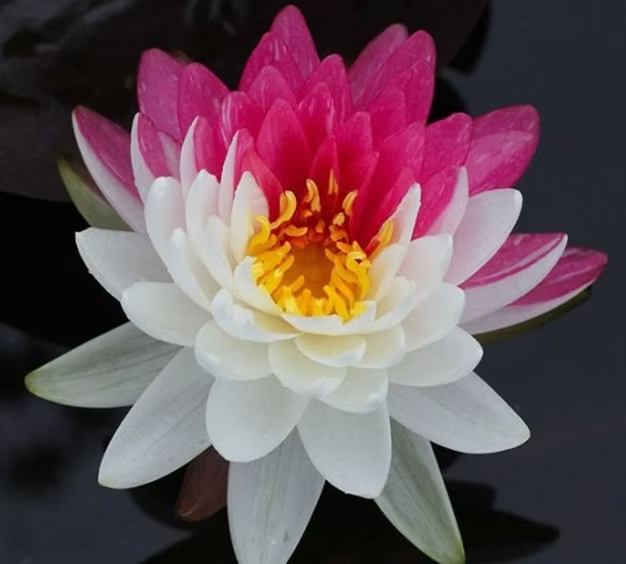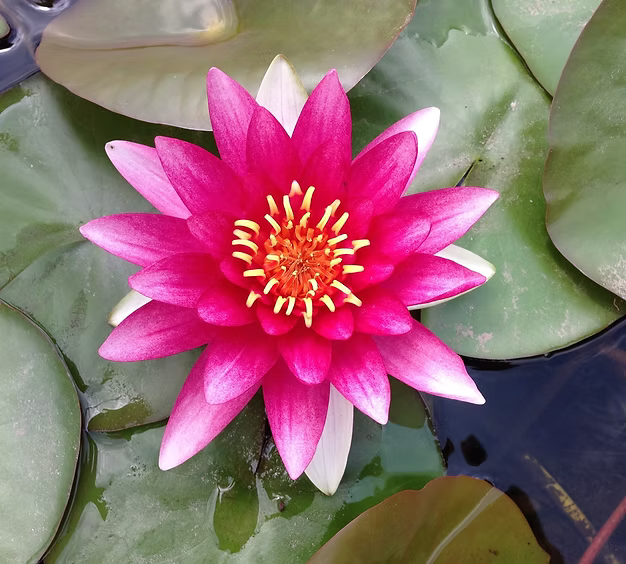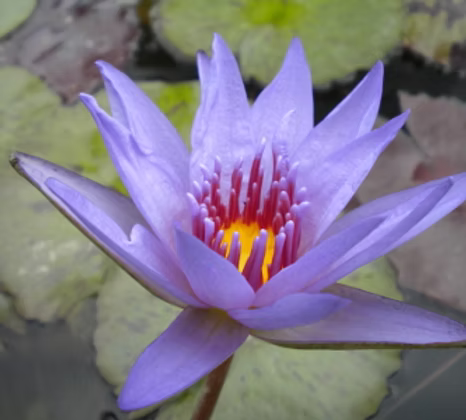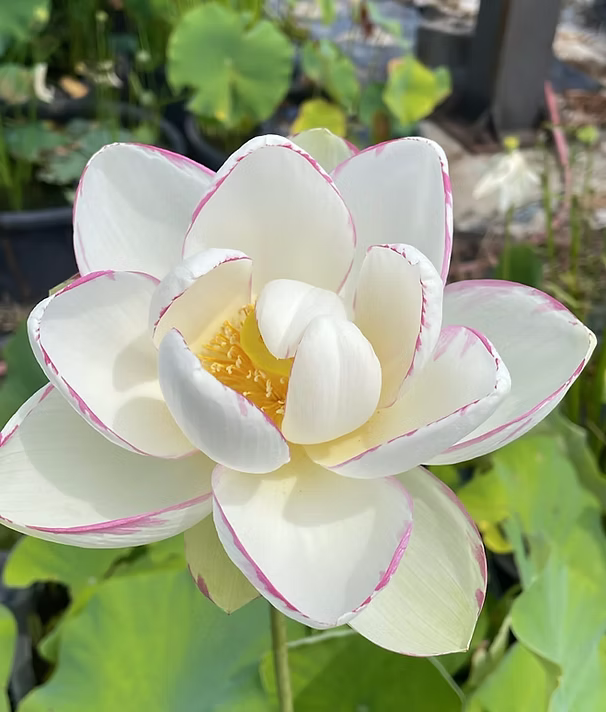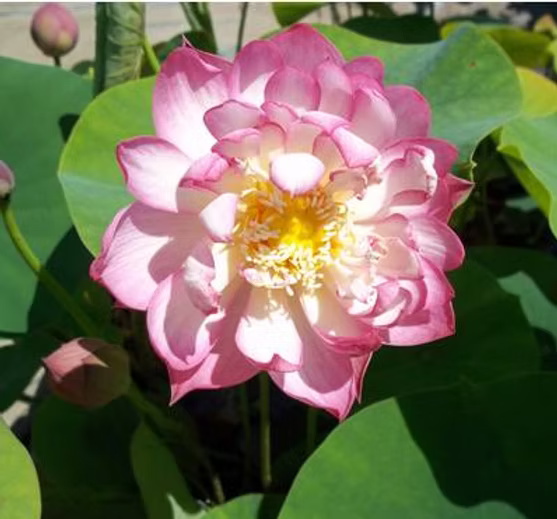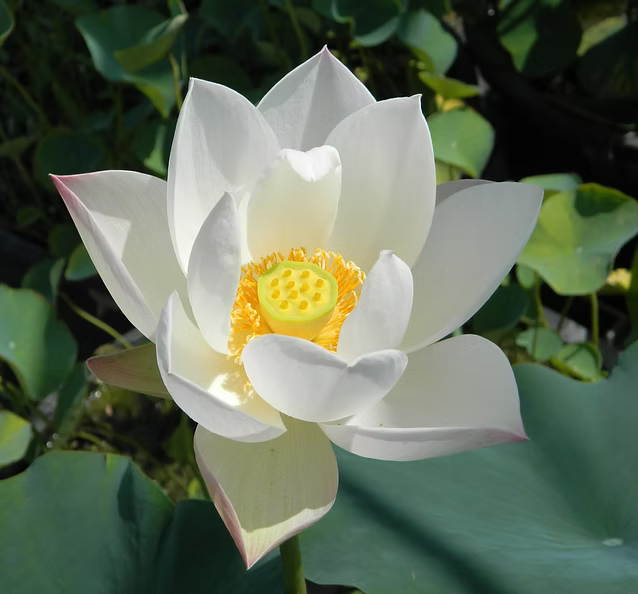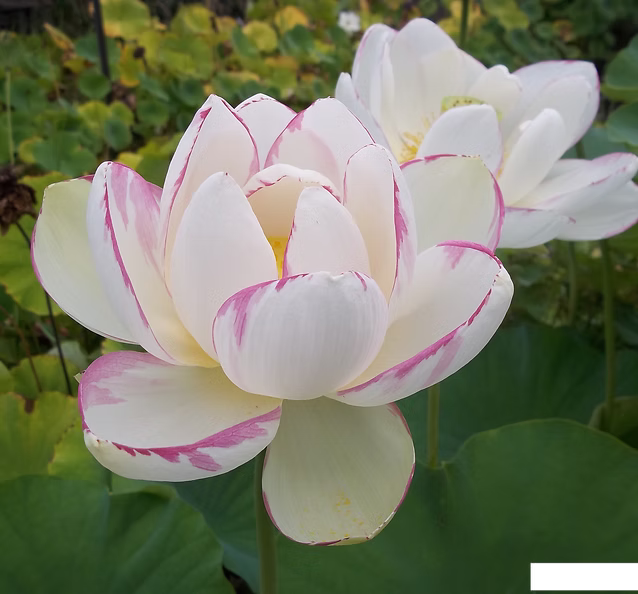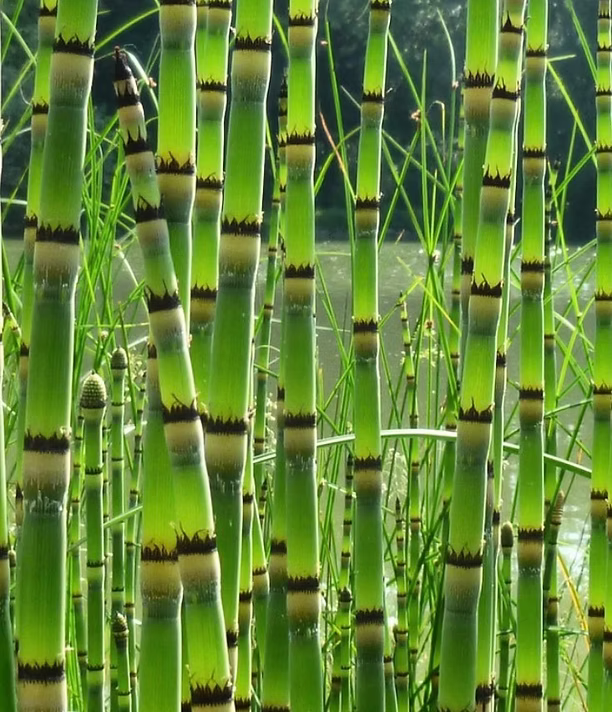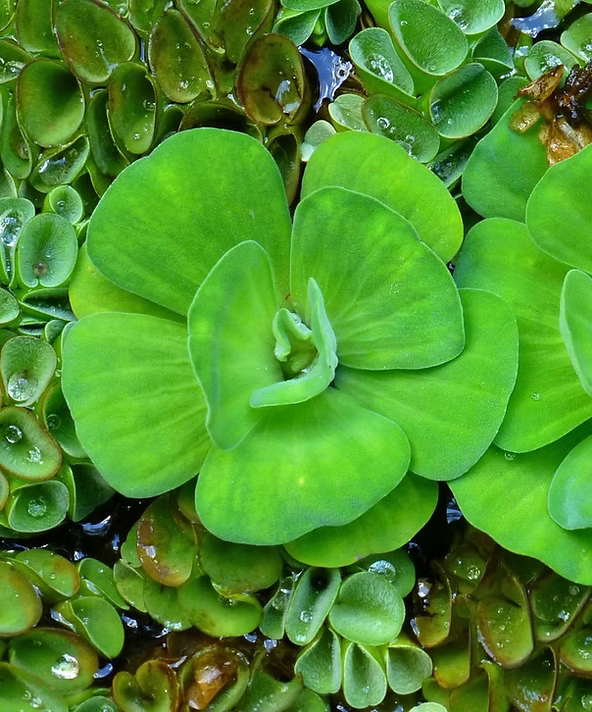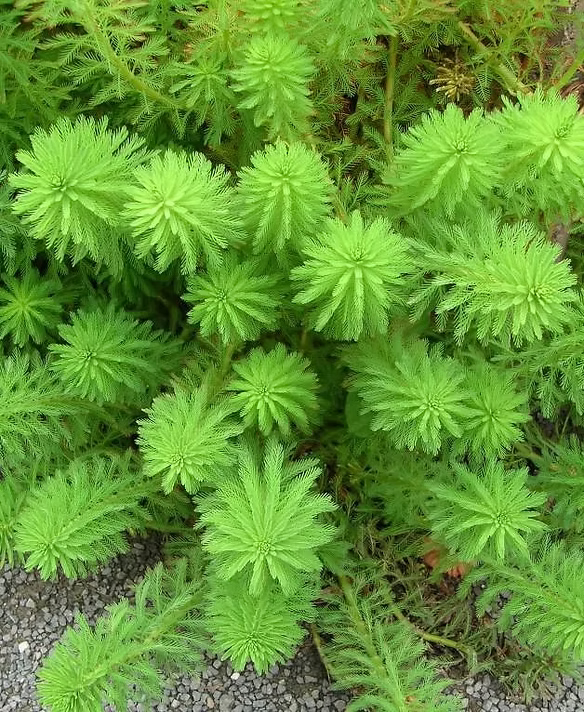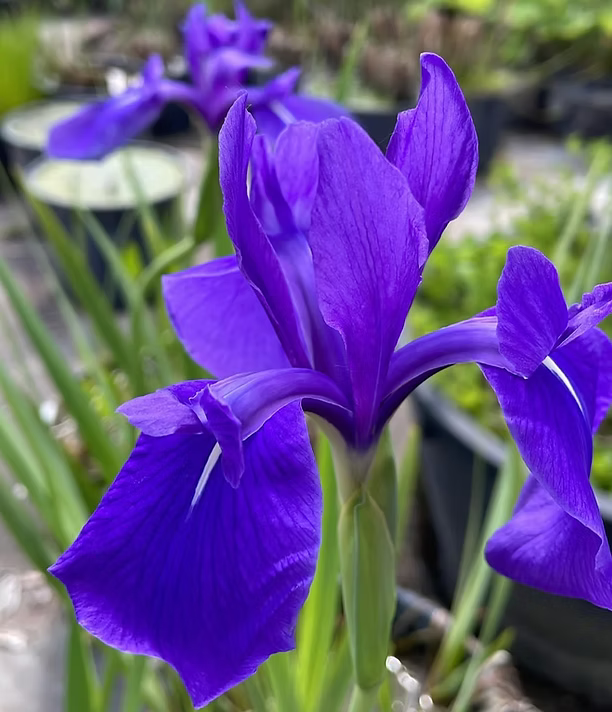Under 20€ for sale
176 products
176 products
Sort by:
Typha laxmanni Lepechin
It is a rhizomatous herbaceous perennial. Its long dark green leaves, between 2 and 7 mm wide, surround the stem, which is shorter than the leaves. On the stem, in summer, the typical inflorescence appears divided into two parts: a female basal part and a male apical part, much thinner and longer. Between these two parts there is a space of 1–6 cm. When the female inflorescence reaches maturity, it takes on an intense brick red color. It is a rare plant.
Plant Information:
- Exposure: Full sun
- Flowering: July - September
- Height above water level: 80–150 cm
- Depth below water level: 2–5 cm
Myriophyllum proserpinacoides
Myriophyllum proserpinacoides is a plant characterized by leaves with five whorled leaves per node, bright green and with a delicate feathery appearance. This very pretty plant should not be considered only as an aquatic: in fact, it loves to emerge from the water and climb the banks, offering a notable ornamental value both in a submerged environment and along the banks.
Plant Information:
- Exposure: Full sun
- Flowering: June - September
IRIS LAEVIGATA
Oriental Elegance for Ponds and Water Gardens
Iris Laevigata is a perennial herbaceous plant native to Asia, perfect for adding a touch of sophistication to water gardens. Its erect stems support beautiful blue-violet flowers, which, although short-lived, make a striking visual impact. For best results, it is recommended to plant several specimens close together in full sun. This hardy plant is ideal for ponds and shallow bodies of water.
Characteristics :
- Elegant Flowers : Violet blue, carried on erect stems, for a unique decorative effect.
- Short but intense flowering : It blooms in the months of May and June.
- Ideal for Ponds : Perfect for aquatic environments with shallow water.
- Exposure : Prefers full sun or partial shade for optimal flowering.
-
Depth and Height :
- Vegetation above water : 60-90 cm.
- Depth under water : 2-5 cm.
With Iris Laevigata, give your pond or water garden a touch of elegance and an explosion of colour, ideal for creating harmonious and refined environments.
GLYCERIA MAXIMA VARIEGATED
Glyceria maxima variegata is an ornamental aquatic plant with linear and flexible leaves, crossed by streaks of white, green and yellow, which in spring and autumn even take on delicate pink shades. The spadix inflorescence, composed of tiny yellowish flowers, completes its decorative appearance, making it ideal for adding a touch of color and movement to the edges of ponds and wetlands.
Main Features
- Variegated Foliage : Streaks of white, green and yellow, with elegant pink veining in spring and autumn.
- Arched Habit : Linear and flexible leaves that create a fluid and harmonious effect.
- Yellowish Inflorescences : Small flowers in spadix that enrich the plant with a light decorative accent.
- Suitable for Different Exposures : Grows well in full sun or partial shade, offering versatility in the garden.
Cultivation Information
- Flowering : From March (III) to April (IV).
- Height : 30-60 cm in moist soil.
- Planting depth : 0-5 cm below water level.
Choose Glyceria maxima variegata to add liveliness to your aquatic space: a unique touch of colour, a soft shape and a discreet flowering that will enhance borders and ponds of various sizes.
GLADSTONYAN
(Richardson – 1897)
Explore the timeless sophistication of Gladstoniana, a unique variety that combines elegance and strength. With its large, pure white star-shaped flowers and the delicate scent that accompanies them, this plant is a perfect choice for enhancing gardens and green spaces. Its vigorous growth ensures a long-lasting, lush presence.
Characteristics :
- Extraordinary Flowers : Star-shaped petals, pure and brilliant white.
- Delicate Fragrance : A natural and pleasant aroma to make every room unique.
- Vigorous Growth : Robust plant, ideal for lush gardens and landscapes.
Give your garden a touch of classic elegance with Gladstoniana, a variety that has continued to enchant botany enthusiasts and nature lovers since 1897.
BORY DE SAINT VINCENT
(Latour-Marliac - 1936)
Bory de Saint Vincent is a refined and versatile water lily, perfect for those who want an aquatic plant with great charm and repeat flowering. Its medium-sized flowers have a unique color combination: red petals from the base to mid-length, which delicately fade to white at the tips. This variety, very repeat flowering, guarantees a touch of continuous elegance in your aquatic garden.
Characteristics :
- Elegant Flowers : Medium sized, with a unique color transition between red and white.
- High Repeat Flowering: Blooms repeatedly throughout the season, offering consistent beauty.
- Perfect for Ponds and Water Gardens : Ideal for adding a sophisticated touch to decorative spaces.
- Historical Tradition : Created in 1936, it is a variety that combines history and refinement.
With Bory de Saint Vincent, enrich your water garden with a water lily that embodies elegance and versatility, perfect for creating a serene and bright atmosphere.
MASANIELLO
(Latour-Marliac – 1908)
Masaniello is a water lily with an authentic and fragrant charm, which produces medium-sized globose flowers, capable of emerging elegantly from the water surface. The central petals have a delicate light red, shaded with white towards the tips, while the external ones are white, creating an extraordinarily harmonious chromatic contrast. A true tribute to the Latour-Marliac tradition, perfect for those who love timeless varieties.
Characteristics
- Fragrant and Emerging Flowers : Globular cups that rise above the surface of the water, diffused by an inebriating fragrance.
- Color Contrast : Light red central petals with white shades towards the tips, surrounded by white outer petals.
- Medium Size : Perfect balance for ponds of various sizes, with a touch of liveliness that does not go unnoticed.
- Historical Heritage : The Latour-Marliac imprint of 1908 makes it a choice of prestige and tradition.
Choose Masaniello to give your water garden an elegance from times gone by, between intense colors and enveloping scents, in a combination of history and beauty.
CAREX PENDULA
Rustic Plant for Phytoremediation and Consolidation of Banks
Carex Pendula is a perennial and rustic aquatic plant, ideal for decorating ponds and consolidating banks. Its linear, pointed and downward-curving leaves create an elegant and natural effect. The stems, taller than the leaves, carry cylindrical spikes that host both male and female flowers, contributing to its ornamental charm. Thanks to its robustness, this variety is widely used for phytoremediation and to prevent erosion of banks.
Characteristics :
- Decorative Leaves : Linear, pointed and curved downwards, for a harmonious appearance.
- Spike Flowers : Tall stems with cylindrical spikes containing male and female flowers.
- Practical Function : Perfect for consolidating banks and improving water quality thanks to phytoremediation.
- Suitable for Ponds and Wet Areas : Ideal for decorative and functional spaces.
- Exposure : Grows well in full sun or partial shade.
-
Depth and Height :
- Vegetation above water : 100-120 cm.
- Depth under water : 2-5 cm.
- Flowering period : From April to May.
With Carex Pendula, add to your water garden a plant that combines beauty, resistance and functionality, ideal for a healthy and stable environment.
NUPHAR PUMILA
Miniature Nuphar Lutea: Rustic and Versatile Aquatic Plant
Nuphar Pumila is a smaller version of Nuphar Lutea, ideal for more compact ponds or bodies of water with limited space. This hardy and fast-growing aquatic plant adapts to all conditions, thriving in flowing, shallow or very deep water. Its floating, heart-shaped basal leaves, covered in a water-repellent waxy layer, are accompanied by golden yellow flowers that fade to orange. These rise delicately above the water level and spread an apple scent. During the night, the flowers close and retreat under the water, giving a touch of mystery and charm.
Characteristics :
- Compact Size : Ideal for small ponds or tight spaces.
- Water-repellent leaves : Heart-shaped and floating, protected by a waxy layer that keeps them dry.
- Fragrant Flowers : Golden yellow fading to orange, with a delicate apple aroma.
- Suitable for All Conditions : It grows in flowing or very deep water and tolerates full sun, partial shade or shade.
- Nocturnal Behavior : The flowers close and retreat underwater at night.
- Exposure : Suitable for full sun, partial shade and shade.
- Ideal Depth : 30 to 100 cm below water level.
- Flowering period : From May to September.
With Nuphar Pumila, bring a compact, versatile and fascinating plant into your water garden, perfect for creating a natural, lush and fragrant environment.
VERY RUSTIC PERENNIAL HERBACEOUS PLANT
Rhizomatous Aquatic Plant for Borders and Phytoremediation
This herbaceous perennial and rhizomatous plant is ideal for the edges of ponds and bodies of water, thanks to its rusticity and its ability to contribute to phytoremediation. It forms dense tufts of dark green stems with a triangular section, while the sheath-shaped leaves wrap around the base of the stems for a natural and tidy appearance. In summer, it produces inflorescences composed of conical spikelets accompanied by rigid dark green bracts, bent at a right angle, which seem to be an extension of the stems.
Characteristics :
- Triangular Stems : Dense clumps of dark green stems, for a natural ornamental effect.
- Sheathed Leaves : They wrap around the base of the stems, giving a neat appearance.
- Elegant Inflorescences : Conical spikelets accompanied by rigid bracts, similar to a continuation of the stems.
- Phytoremediation : Perfect for improving the water quality in ponds.
- Hardiness and Versatility : Suitable for full sun or partial shade conditions.
-
Depth and Height :
- Vegetation above water : 20-30 cm.
- Depth under water : 2-5 cm.
- Flowering period : From June to August.
With this aquatic plant, add a natural and functional element to your garden, perfect for decorating borders and contributing to the health of the aquatic environment.
Trapa natans verbanensis (Water chestnut)
Trapa natans verbanensis, commonly known as water chestnut, is an aquatic plant characterized by diamond-shaped, serrated leaves that are arranged in a rosette. The leaves are olive green and tend to turn red in the fall, adding a seasonal touch to the aquatic landscape. The stems of the plant are reddish and support small white flowers.
Reproductive Cycle:
- The plant bears fruit in October. After pollination, the fruit undergoes a particular process: it folds under water, detaches from the plant and settles on the bottom of the body of water.
- There, the fruit will ripen and give rise to a new plant that will appear the following spring.
- Once the pulp is used up, the empty shell of the fruit rises to the surface again, completing the life cycle.
Plant Information:
- Exposure: Full sun
Trapa natans verbanensis is ideal for ponds and lakes exposed to the sun, where its singular reproductive cycle and the ornamental aspect of its color changes offer considerable botanical and aesthetic interest.
Eriophorum angustifolium
Eriophorum angustifolium is a perennial herbaceous plant characterized by linear and grooved leaves. It blooms in late spring, during which it produces delicate flowers. After flowering, the plant develops elegant white tassels with silvery reflections, formed by thin bristles that can reach a length of up to 3 cm. These distinctive tassels give the plant an ethereal and decorative appearance.
Plant Information:
- Exposure: Full sun or partial shade
- Flowering: March - May
- Height in moist soil: 30–60 cm
This plant does well in moist soils and sunny to partially shaded areas, making it ideal for water gardens, moist borders or marshy areas.
HERMINE
(Latour-Marliac - 1888)
The Hermine variety, introduced in 1888, enchants with its refined simplicity and timeless charm. With medium-sized, tulip-shaped, pure white flowers, this plant is perfect for bringing elegance and harmony to any garden. The delicate scent of its flowers adds a touch of naturalness and sensory beauty.
Characteristics :
- Unique Shape : Tulip-shaped flowers, natural and harmonious design.
- Immaculate Color : Pure white for a touch of class in any green space.
- Delicate Fragrance : A light and pleasant aroma that enriches the experience.
Bring the elegance of Hermine into your garden, an iconic plant that has continued to enhance landscapes and environments with its distinctive beauty since 1888.
COMACHE
(Latour-Marliac - 1908)
Comanche is a classic and fascinating water lily, renowned for its large star-shaped and emerging flowers. Its flowers enchant with a unique gradation of colors: from the pinkish yellow of the first day of opening to the coppery yellow ochre of the third day, with a center that always maintains a more intense shade. This highly re-flowering variety is ideal for those seeking elegance and dynamism in their water garden.
Characteristics :
- Majestic flowers : Large and starry, with a chromatic evolution from pinkish yellow to coppery ochre.
- Intense Colors : The center of the flowers always remains a more vibrant shade, for a spectacular effect.
- Exceptional Repeat Flowering: Blooms profusely throughout the season.
- Suitable for Ponds and Lakes : Perfect for adding colour and movement to water gardens.
With Comanche, transform your garden into a spectacle of colors and reflections, adding a touch of sophistication and timeless beauty.
PAUL HARIOT
(Latour-Marliac - 1908)
Paul Hariot is a classic and charming water lily, perfect for small ponds or decorative lakes. Its small flowers start out with a delicate apricot color and, as they develop, transform into a vibrant red, offering a surprising color show. This historic variety, introduced in 1908, is ideal for those looking for elegance and color in a compact aquatic space.
Characteristics :
- Color Changing Flowers : Small flowers that evolve from apricot to red, creating a unique visual effect.
- Compact Size : Perfect for small ponds and water gardens.
- Historical Tradition : A variety introduced over a century ago, a symbol of quality and refinement.
- Versatility : Ideal for enriching gardens with a touch of colour and style.
With Paul Hariot, add a dynamic and colorful element to your water garden, transforming it into an elegant and welcoming place.
FAQs
Use this text to answer questions in as much detail as possible for your customers.
Ogni pianta ha esigenze specifiche, ma in generale, le radici delle piante palustri devono essere immerse nel substrato, mentre le galleggianti vanno lasciate libere in superficie. L'uso di fertilizzanti naturali e il controllo della luce solare aiutano a mantenerle in salute. Ti invieremo una guida dettagliata con il tuo acquisto.
Sì! Le piante ossigenanti come il ceratophyllum assorbono i nutrienti in eccesso e riducono la crescita delle alghe. Le piante galleggianti come la lattuga d’acqua forniscono ombra e limitano l’evaporazione, contribuendo all’equilibrio dell’ecosistema acquatico.

